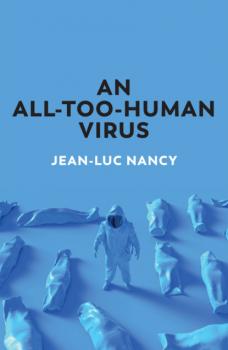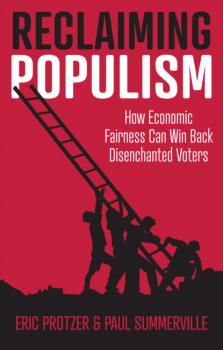John Wiley & Sons Limited
Все книги издательства John Wiley & Sons LimitedDiatom Morphogenesis
DIATOM MORPHOGENESIS A unique book presenting the range of silica structures formed by diatoms, theories and hypotheses of how they are made, and applications to nanotechnology by use or imitation of diatom morphogenesis. There are up to 200,000 species of diatoms, each species of these algal cells bearing an ornate, amorphous silica glass shell. The silica is structured at 7 orders of magnitude size range and is thus the most complex multiscalar solid structure known. Recent research is beginning to unravel how a single cell marshals chemical, physical, biochemical, genetic, and cytoskeletal processes to produce these single-cell marvels. The field of diatom nanotechnology is advancing as this understanding matures. Diatoms have been actively studied over the recent 10-20 years with various modern equipment, experimental and computer simulation approaches, including molecular biology, fluorescence-based methods, electron, confocal, and AFM microscopy. This has resulted in a huge amount of information but the key stages of their silica morphogenesis are still not clear. This is the time to reconsider and consolidate the work performed so far and to understand how we can go ahead. The main objective of this book is to describe the actual situation in the science of diatom morphogenesis, to specify the most important unresolved questions, and to present the corresponding hypotheses. The following areas are discussed: A tutorial chapter, with a glossary for newcomers to the field, who are often from outside of biology, let alone phycology; Diatom Morphogenesis: general issues, including symmetry and size issues; Diatom Morphogenesis: simulation, including analytical and numerical methods for description of the diatom valve shape and pore structure; Diatom Morphogenesis: physiology, biochemistry, and applications, including the relationship between taxonomy and physiology, biosilicification hypotheses, and ideas about applications of diatoms. Audience Researchers, scientists, and graduate students in the fields of phycology, general biology, marine sciences, the chemistry of silica, materials science, and ecology.
Android Smartphones For Seniors For Dummies
The quickest and easiest way to outsmart your Android smartphone Android smartphones, like the Samsung Galaxy and Google Pixel models, offer great ways to simplify and enhance your life. From easy ways to stay in touch with your friends and family to helpful reminders for everyday tasks, Android phones can keep you connected and current at all times. Sometimes, though, the learning curve can seem a little steep. But it doesn’t have to! Android Phones For Seniors For Dummies is your one-stop guide to discovering the essentials on how to take charge of your Android-powered phone. It skips the techspeak and confusing jargon to deliver key information in a straightforward and reader-friendly way. With this book, you’ll learn to: Navigate your way around your smartphone so you can easily open and close apps, access info, and see photos Read your email and messages so you can stay in touch with the important people in your life Secure your phone so you can be assured that you, and only you, can access the sensitive data on it Printed using larger-print type and accompanied by full-color pictures that show you how to apply the step-by-step instructions, this easy handbook is the only resource you’ll need to make the most of your Android phone.
Human Communication Technology
HUMAN COMMUNICATION TECHNOLOGY A unique book explaining how perception, location, communication, cognition, computation, networking, propulsion, integration of federated Internet of Robotic Things (IoRT) and digital platforms are important components of new-generation IoRT applications through continuous, real-time interaction with the world. The 16 chapters in this book discuss new architectures, networking paradigms, trustworthy structures, and platforms for the integration of applications across various business and industrial domains that are needed for the emergence of intelligent things (static or mobile) in collaborative autonomous fleets. These new apps speed up the progress of paradigms of autonomous system design and the proliferation of the Internet of Robotic Things (IoRT). Collaborative robotic things can communicate with other things in the IoRT, learn independently, interact securely with the world, people, and other things, and acquire characteristics that make them self-maintaining, self-aware, self-healing, and fail-safe operational. Due to the ubiquitous nature of collaborative robotic things, the IoRT, which binds together the sensors and the objects of robotic things, is gaining popularity. Therefore, the information contained in this book will provide readers with a better understanding of this interdisciplinary field. Audience Researchers in various fields including computer science, IoT, artificial intelligence, machine learning, and big data analytics.
What is Christianity?
What Is Christianity? provides a fascinating overview of the world’s largest religion, weaving history, theology, spirituality, denominational divisions, and global growth into a single compelling story. Written in clear and captivating prose that requires no previous knowledge of Christianity, it describes the religion inspired by Jesus as a living faith that is still changing and developing today. Reader-friendly chapters introduce the major traditions of Christianity (Eastern Orthodoxy, Roman Catholicism, Protestantism, and Pentecostalism), explaining their spiritual appeal and tracing their evolution over the centuries. Christianity’s recent global expansion is highlighted, but Christianity has been a diverse and multicultural movement from the very beginning. Each chapter provides thought-provoking insights into the beliefs, values, practices, achievements, and failures of Christians as they tried to remain faithful to the message and meaning of Jesus in different times and places. Condenses a vast amount of information into a coherent narrative Explains how and why Christianity has become so incredibly diverse Describes what almost all Christians have always held in common Summarizes the current status of Christianity in each global region Discusses the challenges that Christians worldwide are facing today What Is Christianity? is an ideal introduction to Christianity as a world religion for people who are unfamiliar with Christianity as well as for Christians who want to know more about their own faith and the faith practices of fellow believers from other Christian traditions. An engaging text for general readers, this short volume will also be a stimulating choice for book discussion groups and or for the classroom.
Depressionen überwinden für Dummies
Charles Elliot und Laura Smith, klinische Psychologen mit langjähriger Erfahrung, beschreiben leicht verständlich und einfühlsam die verschiedenen Formen von Depressionen. Sie zeigen Ihnen mit Schritt-für-Schritt-Anleitungen, Selbsttests und Übungen, was Sie tun können, um Ihre dunklen Gedanken zu überwinden und die Welt mit anderen Augen zu betrachten. Außerdem geben sie Tipps, wie kleine Änderungen im Alltag Ihre Symptome lindern und Ihnen Lebensfreude zurückbringen. Sie erfahren auch, wie die traditionelle oder alternative Medizin Sie auf diesem Weg unterstützen kann und wo Sie professionelle Hilfe finden.









